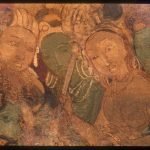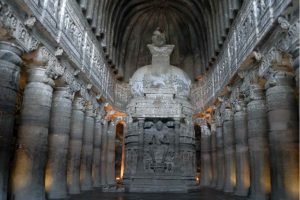“Without art, the crudeness of reality would make the world unbearable” – George Bernard Shaw
The current pandemic has impacted people globally and in such critical testing times if one were to bring up art and philosophize about its purpose it may seem untimely and inappropriate. However, during the imposition of lockdown and with limited in-person interaction people began looking inwards- exploring music, painting, sculpting, and myriad other art forms. Does this mean that arts have flourished during the pandemic? Moreover, does art matter during times of crisis?
What is art?
Art is about communicating a range of ideas, thoughts, and impressions through a medium. Art has served many religious, political, psychological, and social functions, both to maintain structures and in bringing about changes right from the prehistoric to the most contemporary times. Art reflects a worldview; it tells us about the past and the present and at times may even predict the future. From the cave paintings of Alta Mira to the fascinating paintings of Picasso to artworks of contemporary artists, all are reflections of exploration of the world. The depictions in the art are very much societal. It is a truism to state that works of art reflect and are affected by the world around and this dialectical relationship has been deliberated upon by numerous people in the past and the present.
The word ‘art’ is derived from the Latin word ‘artem’ meaning ‘skill’. In the twentieth century, debates arose over the definition of art, and by the turn of the twenty-first century, a variety of new media such as video and installation art further challenged traditional definitions of art. In fact, art challenges precise definition because there are newer inventions, discoveries, and creations of diverse nature that are considered to fall under the category ‘art’. Art involves the creation, making something new, which implies ‘calling into existence of what previously had no form or feature’ (Read 1958:113) and it is expanded to include a process of modifying and interpreting what existed before giving it a new meaning. As commonly acknowledged, the creative impulse is the primary force in all the arts(Mago 2000:1). Art in its broader meaning involves both skill and creative imagination in a musical, literary, visual or performance context. There are numerable examples of how art is the basis of the continuity of human society as Ellen Winner (2019) notes in her book, ‘A Psychological Exploration-How Art Works’, as early as Homo sapiens, and long before there was science, there was art. Archaeologists have found ochre clay incised with decoration from 99,000 years ago, musical instruments from over 35,000 years ago, and masterful figurative paintings on the Chauvet cave walls from 30,000 years ago. There has never been a culture without one or more forms of art— though not all cultures have had a word for art. Art has been the very basis of human societies surviving and continuing.
Art during the times of crisis
Artworks are an emotional experience, for the artist as well as the audience. Art definitely can be created for its own sake with absolutely no utilitarian value, thus in times of crisis such as the pandemic and lockdowns people across the globe immersed in it for pleasure and to escape the perils of the crisis. In the words of the abstract painter, Mark Rothko- ‘A painting is not a picture of an experience. It is an experience’.Social scientists explore and unpack how art influences us and how we experience art. Scholars have discovered the socially constructed nature of art, cultural institutions, artists and publics. This essence of indulging in art was visible during the current pandemic.
The COVID 19 pandemic brought the whole world on its knees and the only known remedy to control this pandemic was ‘social distancing’. The increased turn to the arts during the COVID-19 pandemic shows that during a difficult period in one’s life art can bring solace and provide the mush needed strength to connect to one’s inner self as well to stay afloat. It is like a soothing factor during turmoil. People were forced to be isolated and in the confines of their homes had time to focus on their hobbies and artistic pursuits. Be it art-craft making at home, balcony concerts, new found interest in culinary arts or writing poetry, stories, creating music were all an expression of what it means to be humans and ways to connect to other human beings. Through the various social networking platforms people are sharing their music, painting, culinary skills, poetry, and the varied creative outpouring. Art during times of crisis brought us closer as people shared their art with others thus creating oneness of humanity.
Apart from the artists people from all walks of life turned to various creative pursuits as it provided them something to look forward to, for many it helped cope with anxiety, fear and uncertainty. Through their blogs, they voiced their fears and showed how they indulged in arts which in turn had therapeutic effects. Art in any form can have healing power. The wellbeing and mental health of people was crucial during this crisis and creative pouring surely mattered in these testing times.
















Add Comment